Workers in Song
Billy Bultheel & James Richards
29 Mar - 09 Jun 2024
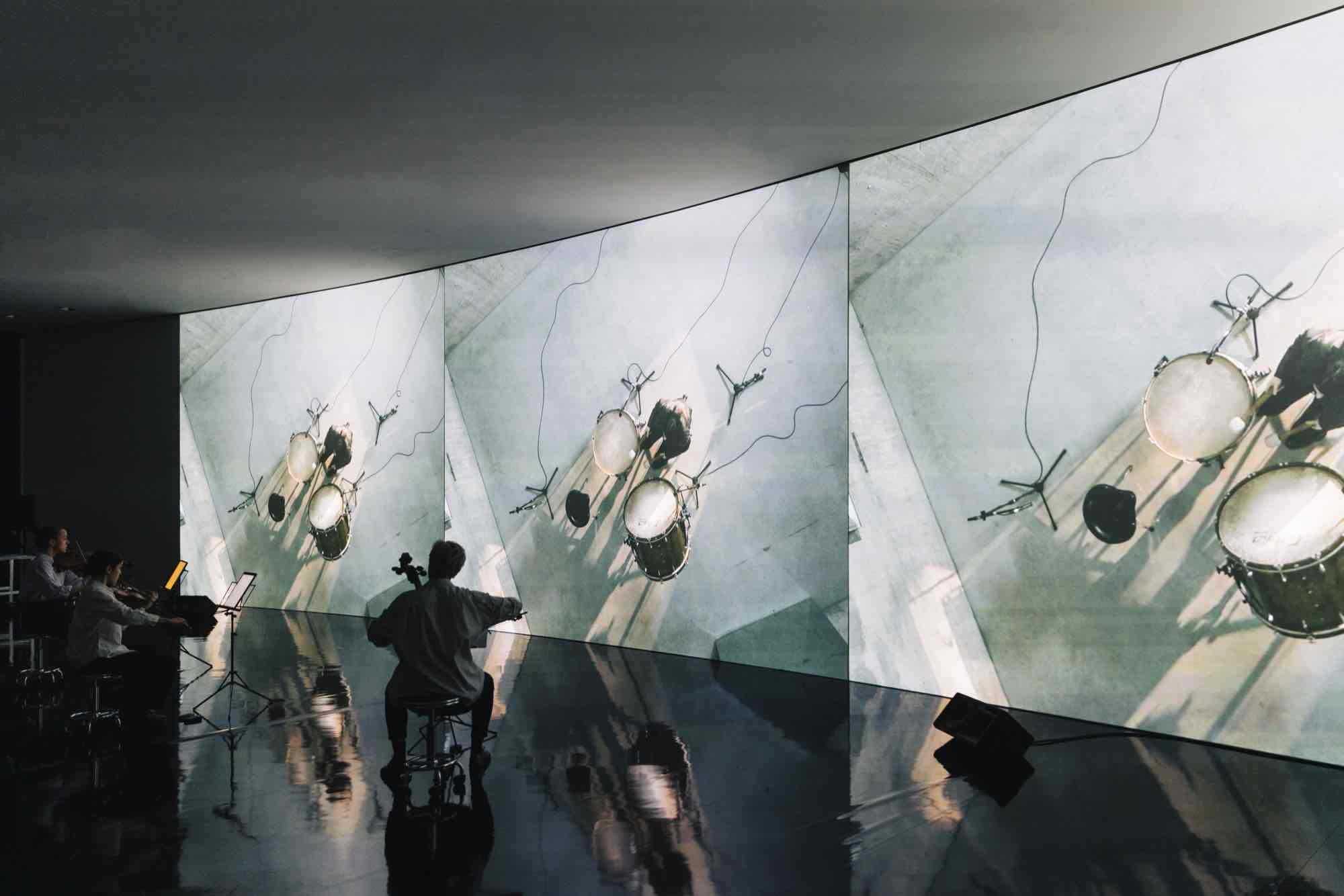
Billy Bultheel and James Richards, Workers in Song, 28.03.2024, Mudam Luxembourg – Musée d’Art Moderne Grand-Duc Jean © Photo: Eike Walkenhorst
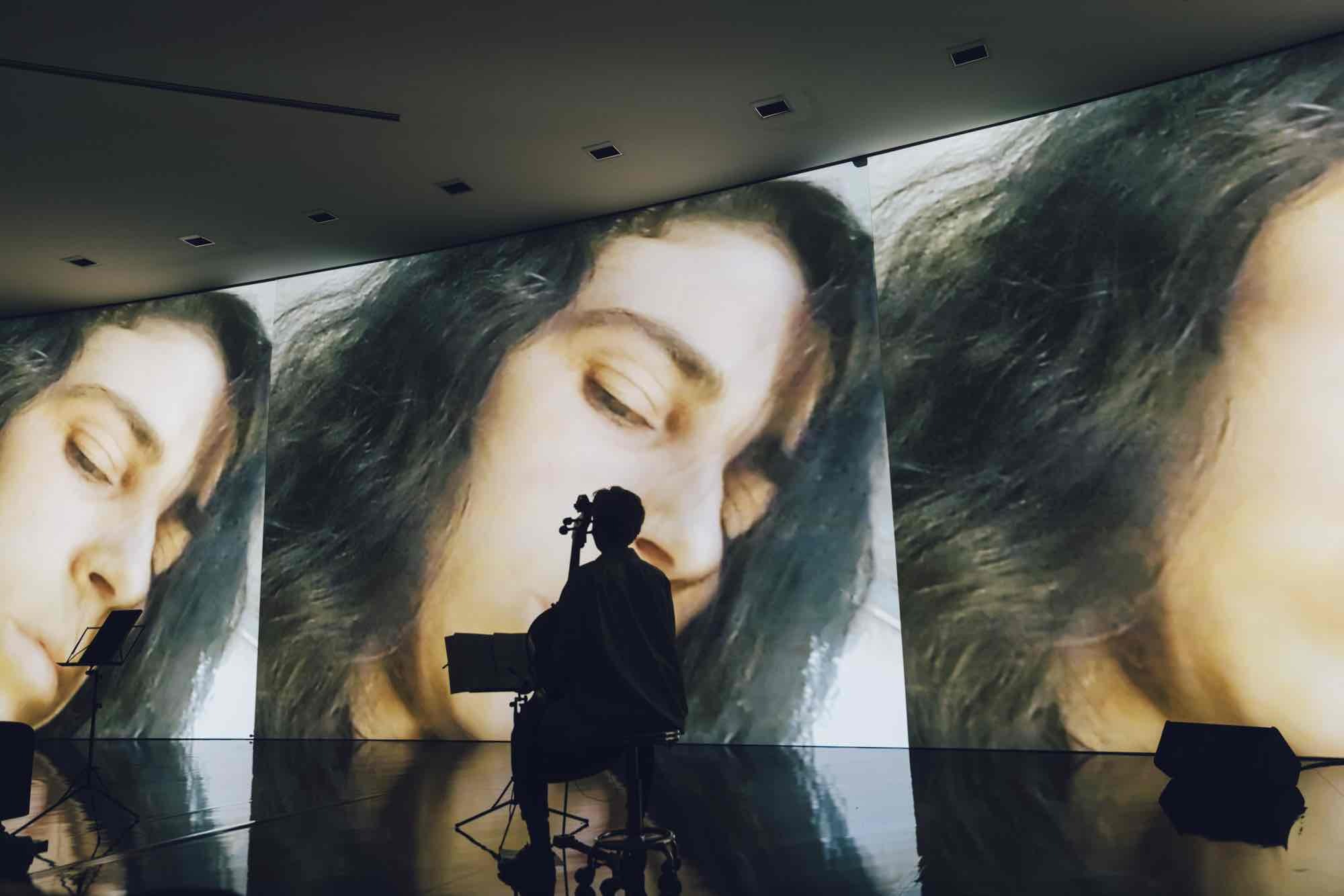
Billy Bultheel and James Richards, Workers in Song, 28.03.2024, Mudam Luxembourg – Musée d’Art Moderne Grand-Duc Jean © Photo: Eike Walkenhorst

Billy Bultheel and James Richards, Workers in Song, 28.03.2024, Mudam Luxembourg – Musée d’Art Moderne Grand-Duc Jean © Photo: Eike Walkenhorst
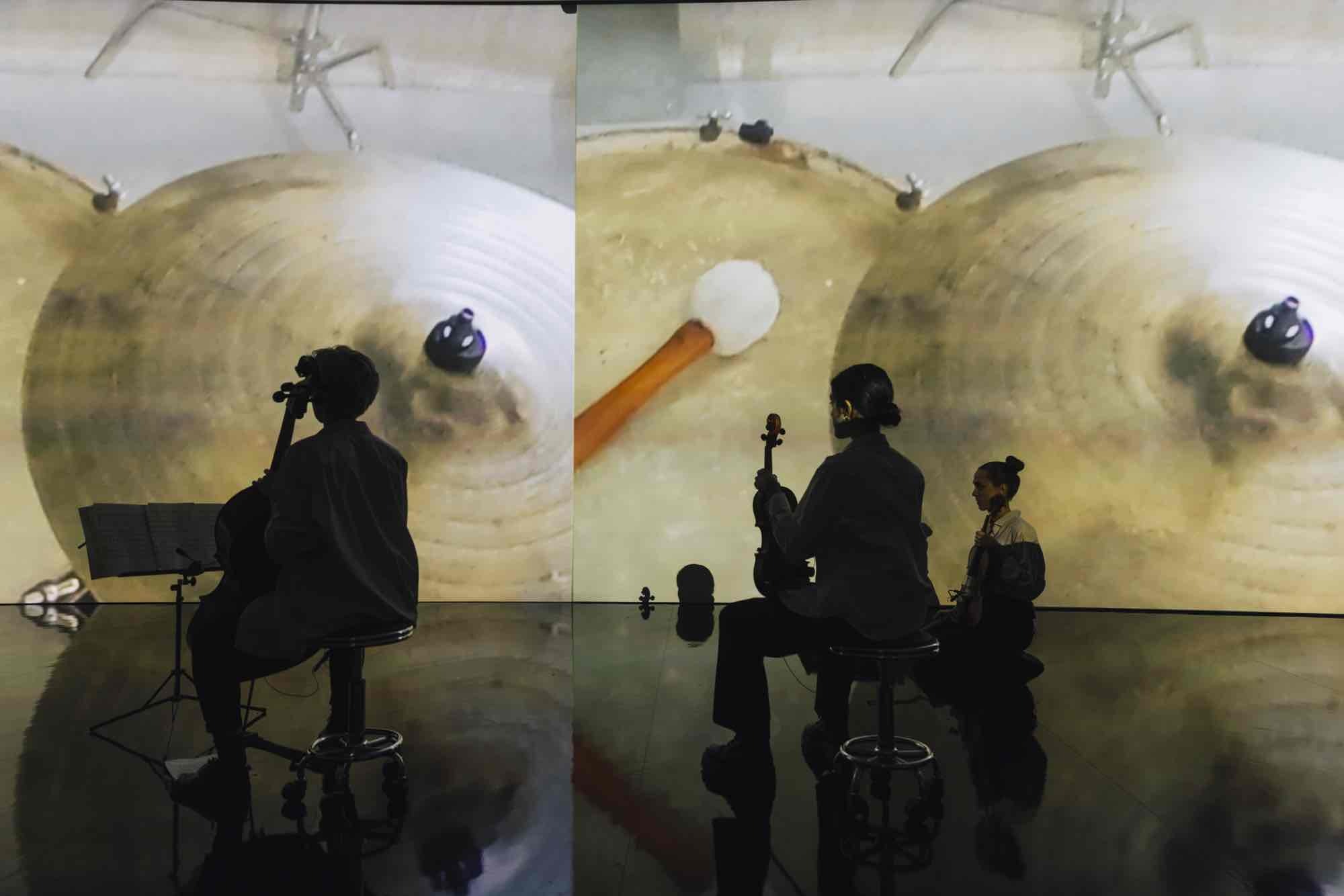
Billy Bultheel and James Richards, Workers in Song, 28.03.2024, Mudam Luxembourg – Musée d’Art Moderne Grand-Duc Jean © Photo: Eike Walkenhorst

Billy Bultheel and James Richards, Workers in Song, 28.03.2024, Mudam Luxembourg – Musée d’Art Moderne Grand-Duc Jean © Photo: Eike Walkenhorst
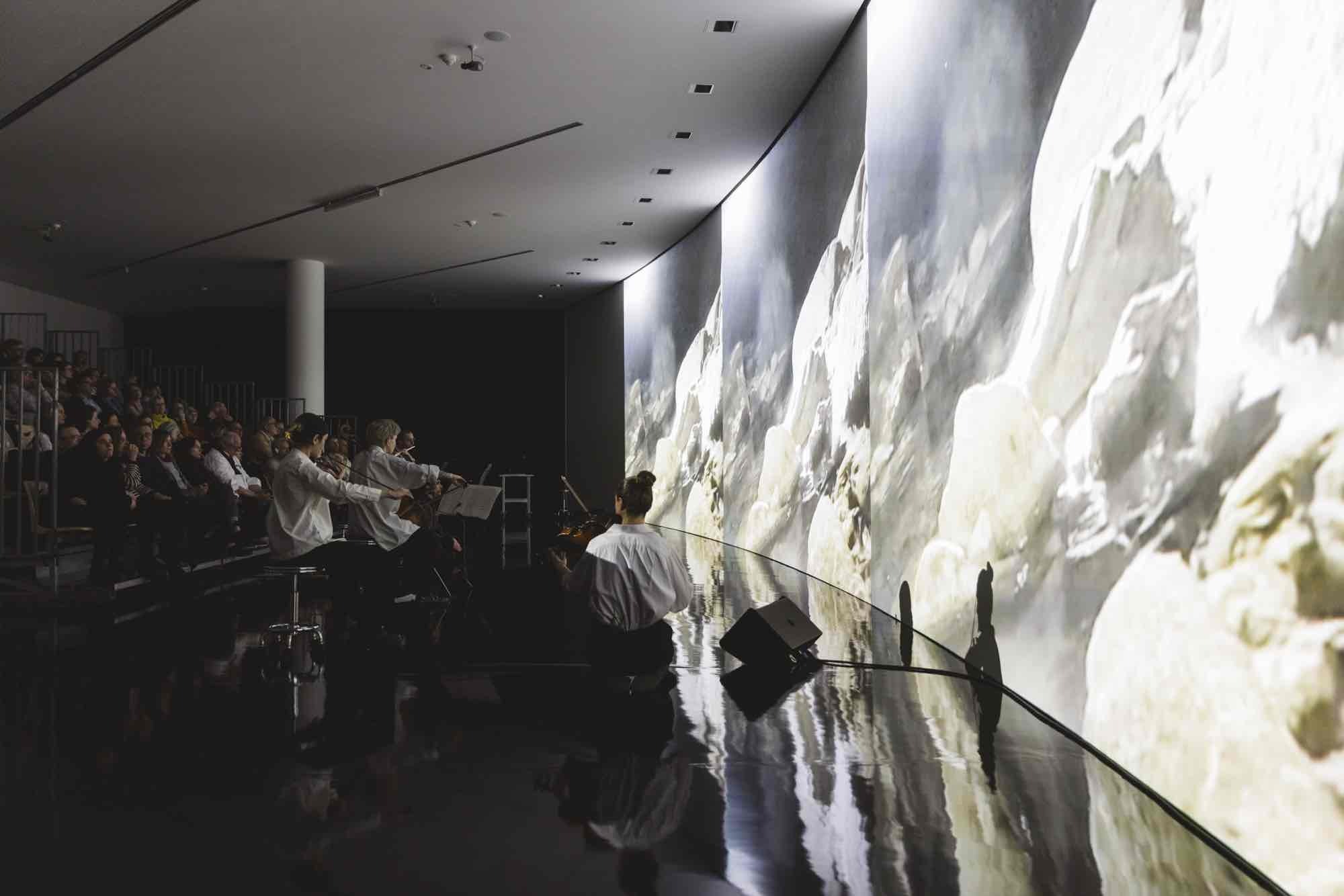
Billy Bultheel and James Richards, Workers in Song, 28.03.2024, Mudam Luxembourg – Musée d’Art Moderne Grand-Duc Jean © Photo: Eike Walkenhorst

Billy Bultheel and James Richards, Workers in Song, 28.03.2024, Mudam Luxembourg – Musée d’Art Moderne Grand-Duc Jean © Photo: Eike Walkenhorst
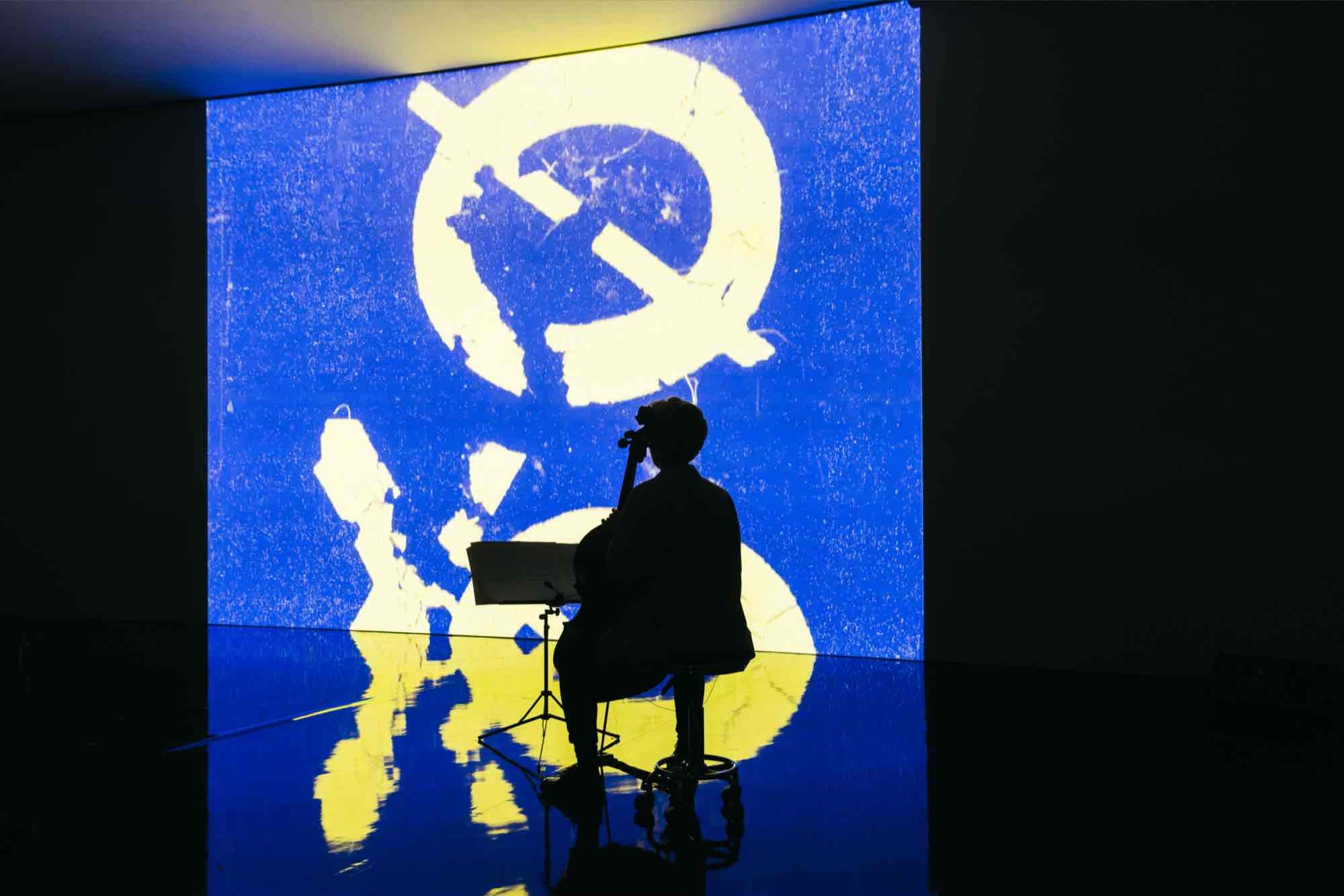
Billy Bultheel and James Richards, Workers in Song, 28.03.2024, Mudam Luxembourg – Musée d’Art Moderne Grand-Duc Jean © Photo: Eike Walkenhorst
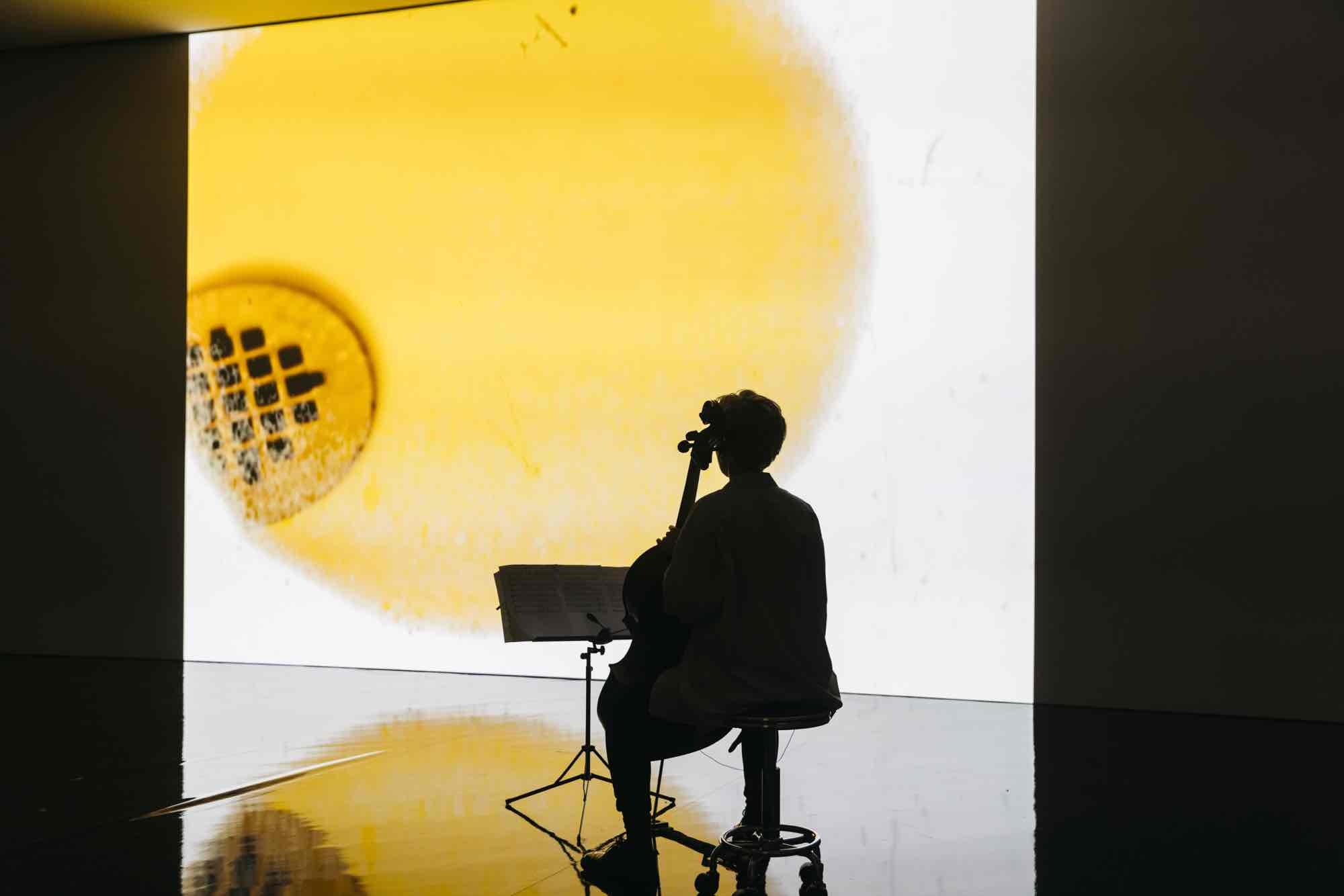
Billy Bultheel and James Richards, Workers in Song, 28.03.2024, Mudam Luxembourg – Musée d’Art Moderne Grand-Duc Jean © Photo: Eike Walkenhorst

Billy Bultheel and James Richards, Workers in Song, 28.03.2024, Mudam Luxembourg – Musée d’Art Moderne Grand-Duc Jean © Photo: Eike Walkenhorst
Workers in Song is the latest iteration of an ongoing collaborative project by composer Billy Bultheel (b. 1987, Brussels) and visual artist James Richards (b. 1983, Cardiff). Their immersive audiovisual installation and performance take visitors on a journey through a whirlwind of original material and citations, spanning the pleasures of online hookups, underground films, and subcultures of bygone eras, as well as the darker dimensions of romantic subjectivity. At Mudam, Bultheel and Richards present a choreographed performance with live music and film on 28 March 2024, alongside an installation that probes the tension between liveness, sentimentality and desire in the absence of the living body.
Conceived as an open-ended, modular structure, Workers in Song operates as a constantly evolving organism which adapts to the specific context of each presentation – the present version staged in an environment the artists specifically designed for the large curved space of Mudam’s West Gallery. Informed by the early days of cinema, when silent films were conceived to be presented with live music, and more contemporary forms including mixtapes or expanded cinema events, Bultheel and Richards present a dynamic musical score as a framework to bring their original material into dialogue with work by other artists – without subsuming any part into a uniform whole. Their own footage, taking viewers through nocturnal landscapes and dystopian brutalist interiors, is mixed with poems, films, and scores by other authors. The atmosphere of the installation is dark, although decisively rich, almost excessive. Many elements of the live event insistently return to the conflicts of human intimacy and the fraught boundaries between self and other. Nevertheless, the work’s episodic nature invites viewers to bring their own experiences to the table and connect the dots, allowing discrete elements to smudge and blur one’s perception.
A central thread running through the presentation of Workers in Song is ‘Der Leiermann’ from Franz Schubert’s Winterreise (1827), which the composer wrote while suffering from syphilis toward the end of his life. It sings of a spurned lover’s journey to the night and, more specifically, his encounter with a derelict hurdy-gurdy player who repeatedly performs a song that seemingly no one cares to hear. In Bultheel and Richards’s installation, a restrained video rendition by Sebastian de la Cour (b. 1980, Copenhagen) suspends the sentimentality of Schubert’s original piece between longing and disillusionment. At the same time, the titular hurdy-gurdy is translated into a computer-controlled piano player, constrasting the song’s lush emotional register by lack of human presence. With this conceptual twist, Bultheel and Richards seem to underscore an almost machinic dimension of human desire – one that keeps us constantly searching, though for what is never clear.
Deepening the convergence between the installation and performative aspect of the work, the presentation at Mudam questions the boundaries between liveness and the pre-recorded, between presence and absence, between ghosts and the archive, in an intimate and intuitive encounter between the audience, music, and moving image. The work Yellow Movie 1/12-13/73 (1973) by Tony Conrad (b. 1940, Concord – d. 2016, Cheektowaga), from the Mudam Collection, was selected by the artists to be part of the installation. Expanding on the history of film and performance, this work is also a nod and a link to the previous iterations of Workers in Song, which included Tony Conrad’s film The Flicker (1966).
Workers in Song seeks to confront the viewer with paradoxical sensations of pleasure and discomfort. It alludes to the depth of human existence, beauty, death, sex, loneliness, nostalgia, togetherness, and their intricate relationships.
Music sheets and documentation from the performance Workers in Song at WIELS are included in this booklet, providing visitors with a glimpse of the work once fully activated.
Curators Joel Valabrega, with Clémentine Proby. Assisted by Nathalie Lesure
Conceived as an open-ended, modular structure, Workers in Song operates as a constantly evolving organism which adapts to the specific context of each presentation – the present version staged in an environment the artists specifically designed for the large curved space of Mudam’s West Gallery. Informed by the early days of cinema, when silent films were conceived to be presented with live music, and more contemporary forms including mixtapes or expanded cinema events, Bultheel and Richards present a dynamic musical score as a framework to bring their original material into dialogue with work by other artists – without subsuming any part into a uniform whole. Their own footage, taking viewers through nocturnal landscapes and dystopian brutalist interiors, is mixed with poems, films, and scores by other authors. The atmosphere of the installation is dark, although decisively rich, almost excessive. Many elements of the live event insistently return to the conflicts of human intimacy and the fraught boundaries between self and other. Nevertheless, the work’s episodic nature invites viewers to bring their own experiences to the table and connect the dots, allowing discrete elements to smudge and blur one’s perception.
A central thread running through the presentation of Workers in Song is ‘Der Leiermann’ from Franz Schubert’s Winterreise (1827), which the composer wrote while suffering from syphilis toward the end of his life. It sings of a spurned lover’s journey to the night and, more specifically, his encounter with a derelict hurdy-gurdy player who repeatedly performs a song that seemingly no one cares to hear. In Bultheel and Richards’s installation, a restrained video rendition by Sebastian de la Cour (b. 1980, Copenhagen) suspends the sentimentality of Schubert’s original piece between longing and disillusionment. At the same time, the titular hurdy-gurdy is translated into a computer-controlled piano player, constrasting the song’s lush emotional register by lack of human presence. With this conceptual twist, Bultheel and Richards seem to underscore an almost machinic dimension of human desire – one that keeps us constantly searching, though for what is never clear.
Deepening the convergence between the installation and performative aspect of the work, the presentation at Mudam questions the boundaries between liveness and the pre-recorded, between presence and absence, between ghosts and the archive, in an intimate and intuitive encounter between the audience, music, and moving image. The work Yellow Movie 1/12-13/73 (1973) by Tony Conrad (b. 1940, Concord – d. 2016, Cheektowaga), from the Mudam Collection, was selected by the artists to be part of the installation. Expanding on the history of film and performance, this work is also a nod and a link to the previous iterations of Workers in Song, which included Tony Conrad’s film The Flicker (1966).
Workers in Song seeks to confront the viewer with paradoxical sensations of pleasure and discomfort. It alludes to the depth of human existence, beauty, death, sex, loneliness, nostalgia, togetherness, and their intricate relationships.
Music sheets and documentation from the performance Workers in Song at WIELS are included in this booklet, providing visitors with a glimpse of the work once fully activated.
Curators Joel Valabrega, with Clémentine Proby. Assisted by Nathalie Lesure
